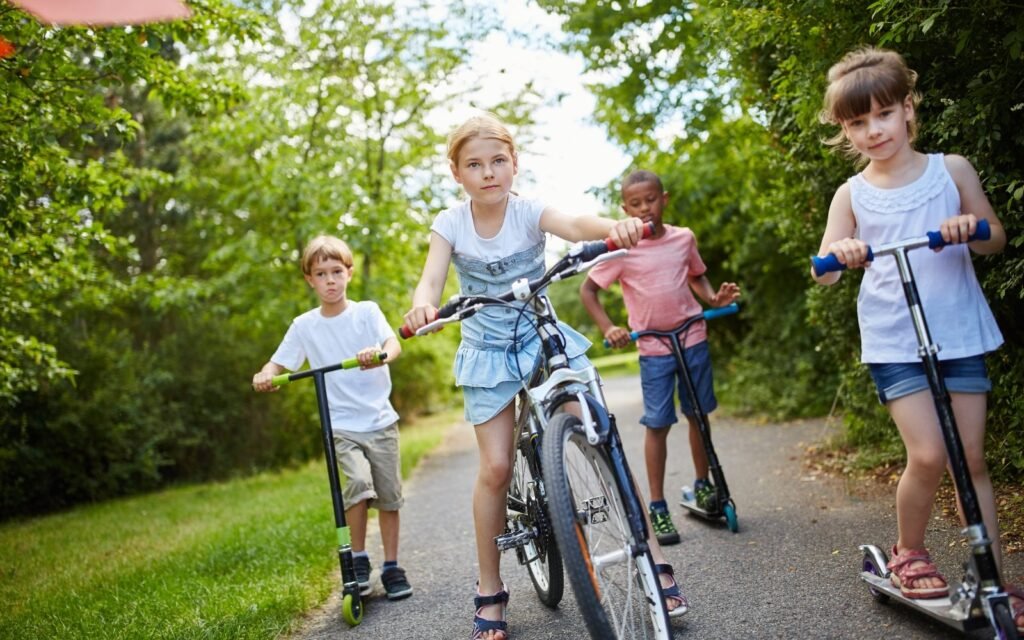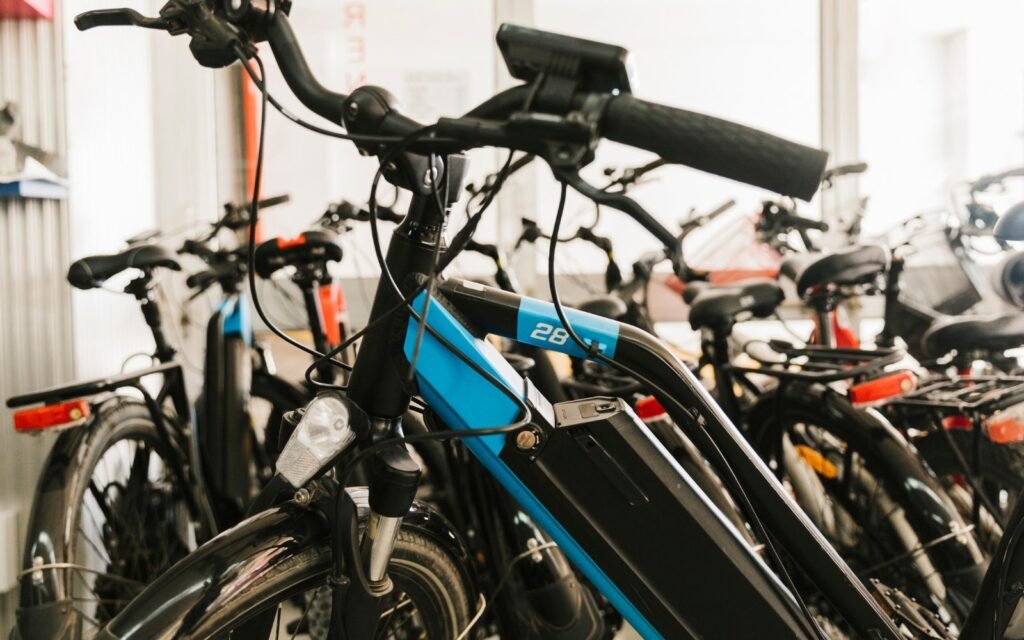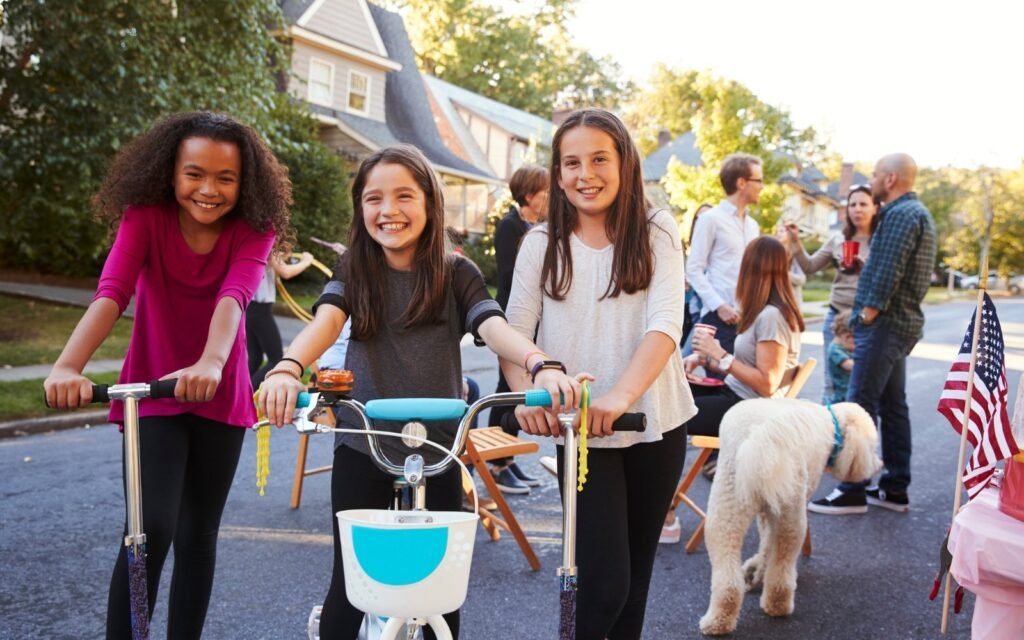Electric Scooter vs Bike for Kids: The Complete Parent’s Guide to Making the Right Choice

Parents spend an average of 47 hours researching transportation options for their children, with the electric scooter vs bike for kids decision ranking among the most challenging, according to recent studies by the National Safe Routes to School Partnership. This choice has become increasingly complex as electric scooters gain mainstream acceptance while bicycles maintain their position as the traditional childhood transportation milestone.
The challenge goes beyond simple preference or cost considerations. Parents must evaluate safety records, developmental benefits, environmental impact, and long-term value while considering their child’s unique needs and local infrastructure.
This comprehensive guide will help you navigate the electric scooter vs bike for kids comparison with confidence and clarity. Having spent two years testing both options with children across different age groups and consulting with pediatric development experts and transportation safety specialists, I’ll provide the evidence-based insights you need to make the best decision for your family’s specific circumstances.
Key Takeaways – Electric Scooter vs Bike for Kids
- Bikes excel in physical development and long-term transportation skills, while electric scooters offer easier learning curves and immediate usability
- Safety profiles differ significantly, with bikes requiring more skill development but offering better stability once mastered
- Age and developmental readiness play crucial roles in determining which option provides better value and appropriate challenge levels
- Total cost of ownership varies dramatically between options when factoring in maintenance, storage, and longevity considerations
Understanding the Fundamental Differences in Electric Scooter vs Bike for Kids

Learning Curve and Skill Development
The electric scooter vs bike for kids comparison reveals striking differences in skill acquisition requirements. Electric scooters typically allow children to achieve basic mobility within minutes, requiring minimal balance training due to their three-point contact system (two hands, one foot).
Bicycles demand more comprehensive skill development, including balance, pedaling coordination, steering, and braking integration. This steeper learning curve can frustrate some children but provides more substantial developmental benefits once mastered.
The instant gratification of electric scooters may appeal to children who struggle with traditional bicycle learning, though this convenience might delay development of important persistence and problem-solving skills.
Physical and Cognitive Development Impact
From a developmental perspective, the electric scooter vs bike for kids analysis heavily favors bicycles. Cycling develops bilateral coordination, strengthens leg muscles, improves cardiovascular fitness, and enhances spatial awareness through complex navigation requirements.
Electric scooters provide minimal physical exercise beyond basic balance maintenance, potentially contributing to sedentary lifestyle patterns if they replace more active transportation methods. However, they do develop spatial reasoning and traffic awareness skills.
The cognitive load differs significantly as well. Bicycle riding requires simultaneous management of pedaling, steering, braking, and balance, creating valuable neural pathways for complex motor planning that transfer to other activities.
Age-Appropriate Considerations for Electric Scooter vs Bike for Kids

Developmental Readiness Guidelines
Age recommendations in the electric scooter vs bike for kids decision reflect different developmental requirements. Most children can begin learning to ride bikes with training wheels around age 3-4, progressing to two-wheel riding by ages 5-7 with proper instruction.
Electric scooters are generally appropriate for children 8 years and older, though individual maturity levels significantly impact safe operation. The ability to understand throttle control, speed management, and traffic awareness becomes crucial for electric scooter safety.
Balance bikes offer an excellent transitional option for younger children, bridging the gap between walking and pedaling while developing fundamental cycling skills that transfer directly to traditional bicycles.
Physical Size and Strength Requirements
The electric scooter vs bike for kids comparison must consider physical requirements for safe operation. Bicycles require sufficient leg strength for pedaling and arm strength for steering and braking, particularly when navigating hills or stopping quickly.
Electric scooters demand less physical strength but require fine motor control for throttle management and spatial awareness for speed-appropriate decision making. The lower physical barriers can make electric scooters accessible to children with certain physical limitations.
Both options require proper sizing for safe operation, but bicycles offer more adjustment potential through seat height and handlebar positioning, potentially extending usable life as children grow.
Skill Progression Pathways
Bicycle skill development follows a natural progression from balance bikes to training wheels to independent riding, with each stage building foundational skills for the next level. This systematic approach develops confidence and competence gradually.
Electric scooters lack this developmental progression, offering immediate full functionality without skill-building stages. While this provides instant satisfaction, it may miss opportunities for developing persistence and problem-solving abilities.
Consider your child’s learning style and frustration tolerance when choosing between these different skill development approaches in the electric scooter vs bike for kids decision.
Safety Analysis: Electric Scooter vs Bike for Kids

Injury Statistics and Risk Patterns
Safety data reveals important differences in the electric scooter vs bike for kids risk profiles. Bicycle injuries typically involve falls during skill development or collisions with obstacles, with most injuries being minor scrapes and bruises.
Electric scooter injuries often involve higher speeds and less predictable circumstances, with emergency room data showing increased rates of facial injuries and fractures. The Consumer Product Safety Commission reports a 222% increase in electric scooter injuries among children over the past five years.
However, bicycles account for more total injuries due to higher usage rates and longer exposure times. The severity and type of injuries differ more than overall frequency between the two options.
Environmental Safety Factors
Traffic interaction presents different challenges in the electric scooter vs bike for kids safety comparison. Bicycles operate more predictably in traffic due to consistent speed and established cycling infrastructure in many areas.
Electric scooters may struggle with infrastructure designed for bicycles, particularly bike lanes with elevation changes or narrow pathways. The ability to quickly dismount from scooters provides some safety advantages in emergency situations.
Weather conditions affect both options differently. Wet surfaces pose significant risks for electric scooters due to reduced braking effectiveness, while bicycles maintain better traction and stopping power in various conditions. When planning safe outdoor play ideas for toddlers, consider weather conditions and terrain compatibility for both options.
Protective Equipment and Safety Gear
Helmet requirements remain consistent in the electric scooter vs bike for kids safety equation, but additional protective gear recommendations differ. Bicycle riding typically requires only helmets for recreational use, though knee and elbow pads benefit beginners.
Electric scooter use often warrants additional protection including knee pads, elbow pads, and sometimes wrist guards due to higher speeds and fall patterns. The increased protective gear requirements add to overall costs and complexity.
Visibility equipment becomes more crucial for electric scooter users who may venture further from home and potentially ride during lower-light conditions than typical bicycle beginners.
Cost Analysis: Electric Scooter vs Bike for Kids

Initial Investment Comparison
The upfront cost difference in electric scooter vs bike for kids purchases varies significantly by quality level. Entry-level bicycles suitable for children range from $100-300, while comparable electric scooters typically cost $200-500.
However, high-quality children’s bicycles can exceed $400-600, bringing them closer to electric scooter price ranges. The key difference lies in longevity expectations and feature requirements for each option.
Budget considerations must also include necessary accessories like helmets, locks, and potential protective gear, which may cost more for electric scooter users due to additional safety equipment recommendations.
Long-Term Ownership Expenses
Ongoing costs heavily favor bicycles in the electric scooter vs bike for kids financial analysis. Bicycle maintenance involves periodic tune-ups, tire replacements, and chain lubrication, typically costing $50-100 annually for regular users.
Electric scooters require battery replacement every 1-3 years ($50-150), motor maintenance, and more complex repairs when mechanical issues arise. Software updates and electronic component failures add unpredictable costs to ownership.
Insurance and liability considerations may also apply differently, with some homeowner’s policies covering bicycle-related incidents but potentially excluding electric scooter accidents.
Value Retention and Upgrade Paths
Resale value strongly favors bicycles in the electric scooter vs bike for kids long-term value equation. Quality children’s bicycles retain value well and can serve multiple children over many years with proper maintenance.
Electric scooters face rapid technology obsolescence, battery degradation, and compatibility issues that significantly reduce resale value. The pace of innovation in electric mobility makes models outdated quickly.
Consider the total lifecycle cost and potential for passing equipment to younger siblings or reselling when evaluating the true financial impact of each option.
Practical Usage and Lifestyle Integration

Transportation vs Recreation Balance
The electric scooter vs bike for kids decision often depends on intended use patterns and family transportation needs. Bicycles excel for longer recreational rides, exercise, and developing independent transportation skills.
Electric scooters work well for shorter commutes, quick errands, and situations where arriving without perspiration matters. However, their limited range and charging requirements may restrict spontaneous use.
Consider whether the primary goal is recreation, transportation, exercise, or skill development when weighing the practical benefits of each option for your family’s lifestyle.
Storage and Maintenance Requirements
Both options present storage challenges, but bicycles generally require more space due to their larger size and wheel configuration. However, many homes already have bicycle storage solutions established.
Electric scooters fold more compactly but require access to charging outlets and climate-controlled storage for battery longevity. Extreme temperatures can damage batteries and reduce performance significantly.
Maintenance complexity differs substantially. Bicycle maintenance can often be performed at home with basic tools, while electric scooter repairs typically require specialized knowledge or professional service.
Weather and Seasonal Considerations
Climate significantly impacts the electric scooter vs bike for kids usability comparison. Bicycles operate consistently across weather conditions with appropriate clothing and tire choices.
Electric scooters face limitations in wet conditions due to electrical components and reduced grip. Cold weather dramatically affects battery performance and may render scooters unusable in extreme conditions.
Seasonal storage requirements also differ, with electric scooters needing battery maintenance during extended storage periods while bicycles can be stored with minimal preparation.
Making the Right Choice for Your Family

Assessment Framework for Electric Scooter vs Bike for Kids
Create a systematic evaluation process considering your child’s age, physical development, learning style, and intended usage patterns. Factor in your family’s budget for both initial purchase and ongoing costs.
Evaluate your local infrastructure including bike lanes, storage space, charging capabilities, and safety considerations specific to your neighborhood and typical destinations.
Consider starting with a bicycle for younger children to develop fundamental transportation skills, potentially adding electric scooters later as children mature and demonstrate responsible usage habits. Understanding effective time management for parents can help you plan appropriate introduction timelines for either option.
Trial and Testing Opportunities
Many communities offer bike lending programs or rental options that allow extended testing before making the electric scooter vs bike for kids purchase decision. Take advantage of these opportunities to assess your child’s interest and aptitude.
Some retailers provide test ride opportunities or generous return policies that enable home trials. This approach prevents costly mistakes and ensures the final choice matches your family’s actual usage patterns.
Consider borrowing from friends or relatives to gain real-world experience with both options before committing to a purchase.
Environmental and Social Impact Considerations

Carbon Footprint and Sustainability
From an environmental perspective, the electric scooter vs bike for kids comparison generally favors bicycles due to their zero-emission operation and longer lifespan. Electric scooters require battery production and electricity consumption, though they may replace car trips.
Manufacturing impact varies by quality and materials, but bicycles typically have lower environmental costs due to simpler construction and longer useful life. Consider the replacement frequency when evaluating total environmental impact.
Both options promote sustainable transportation habits that may influence lifelong travel choices, though bicycles more directly encourage human-powered mobility.
Community and Social Benefits
Bicycling often provides more opportunities for family activities and community engagement through group rides, cycling clubs, and established cycling culture in many areas.
Electric scooters may face social acceptance challenges in some communities due to safety concerns or infrastructure limitations. However, they can provide mobility options for children who struggle with traditional bicycle learning.
Consider how each option fits into your community’s transportation culture and available infrastructure when making the electric scscooter vs bike for kids decision.
Practical Takeaways
- Assess your child’s developmental readiness and learning style to determine which option provides appropriate challenge and skill-building opportunities
- Factor in total cost of ownership including maintenance, protective gear, and replacement timelines when comparing financial impact
- Consider your local infrastructure, storage capabilities, and climate when evaluating practical usability for each option
- Start with bicycles for younger children to build fundamental transportation skills before potentially adding electric scooters
- Test both options when possible to assess your child’s interest, aptitude, and safety awareness before making a purchase commitment
Summary
The electric scooter vs bike for kids decision ultimately depends on your child’s developmental needs, your family’s lifestyle, and your long-term transportation goals. While electric scooters offer convenience and immediate gratification, bicycles provide superior physical development benefits and long-term value.
For most families, bicycles represent the better foundational choice, particularly for younger children developing transportation skills. Electric scooters can complement bicycles later as children mature and demonstrate responsible riding habits.
Consider your specific circumstances carefully, test options when possible, and prioritize safety and developmental benefits over convenience. When selecting the best option for your family, remember that building resilience in young children includes allowing them to face appropriate challenges and develop problem-solving skills through physical activities.
For families looking to support their child’s development further, consider exploring encouraging independent play activities that complement outdoor transportation choices.
FAQs About Electric Scooter vs Bike for Kids
What age is best for choosing between electric scooter vs bike for kids?
- Most children can start learning bicycles around age 4-5 with training wheels
- Electric scooters are generally appropriate for ages 8 and older with proper supervision
- Individual maturity and physical development matter more than specific age
- Consider starting with bicycles to build fundamental transportation skills first
How do safety records compare between electric scooter vs bike for kids?
- Bicycles have more total injuries but often less severe due to lower speeds
- Electric scooters show increasing injury rates with more serious trauma patterns
- Both require helmets, but electric scooters may need additional protective gear
- Proper training and supervision significantly reduce risks for both options
Which option provides better exercise in the electric scooter vs bike for kids comparison?
- Bicycles offer significantly more cardiovascular and strength-building exercise
- Electric scooters provide minimal physical activity beyond balance maintenance
- Cycling develops coordination, leg strength, and endurance more effectively
- Consider electric scooters only if they replace car trips rather than active transportation
What are the main cost differences in electric scooter vs bike for kids ownership?
- Bicycles typically cost $100-400 initially with lower ongoing maintenance expenses
- Electric scooters range $200-500+ with battery replacement and repair costs
- Long-term ownership strongly favors bicycles due to simpler systems and better durability
- Factor in accessories, protective gear, and replacement timelines for accurate comparison
Can children easily transition between electric scooter vs bike for kids options?
- Most children adapt well from bicycles to electric scooters due to similar balance skills
- Transitioning from electric scooters to bicycles may require more adjustment and training
- Fundamental steering and balance skills transfer between both transportation methods
- Starting with bicycles builds broader transportation skills applicable to multiple options
